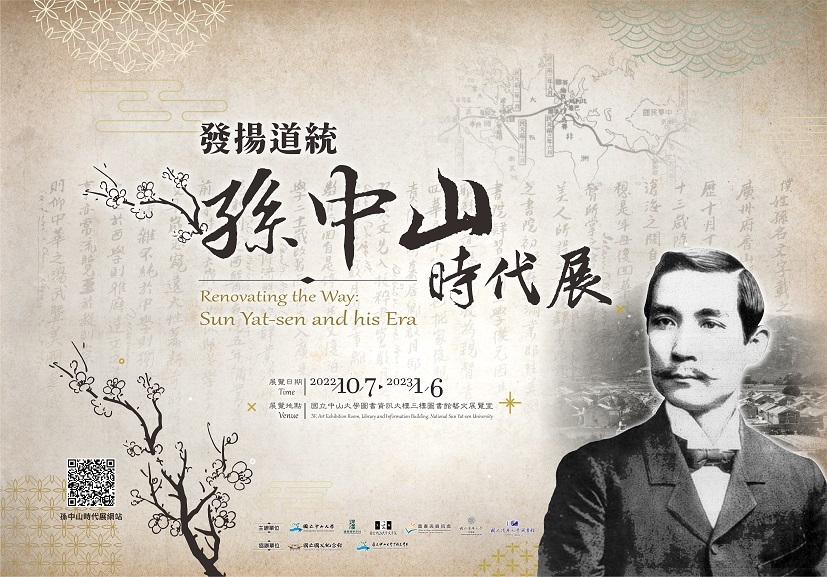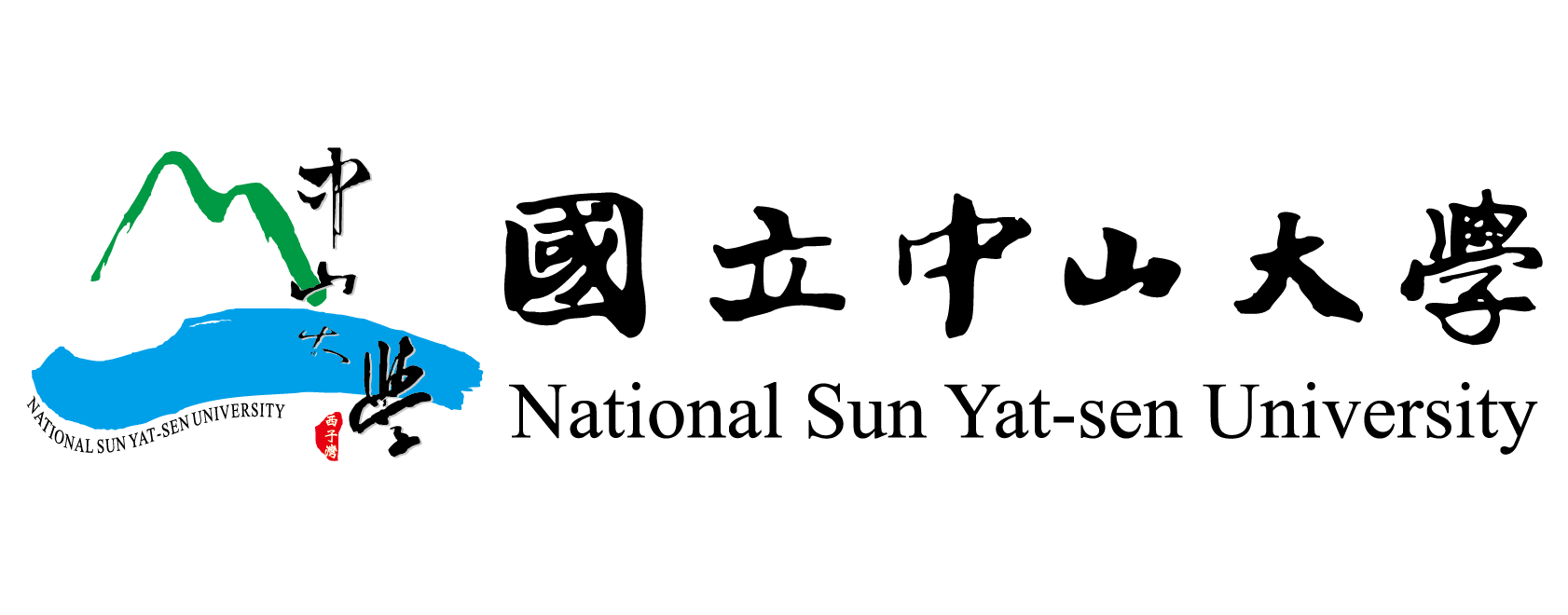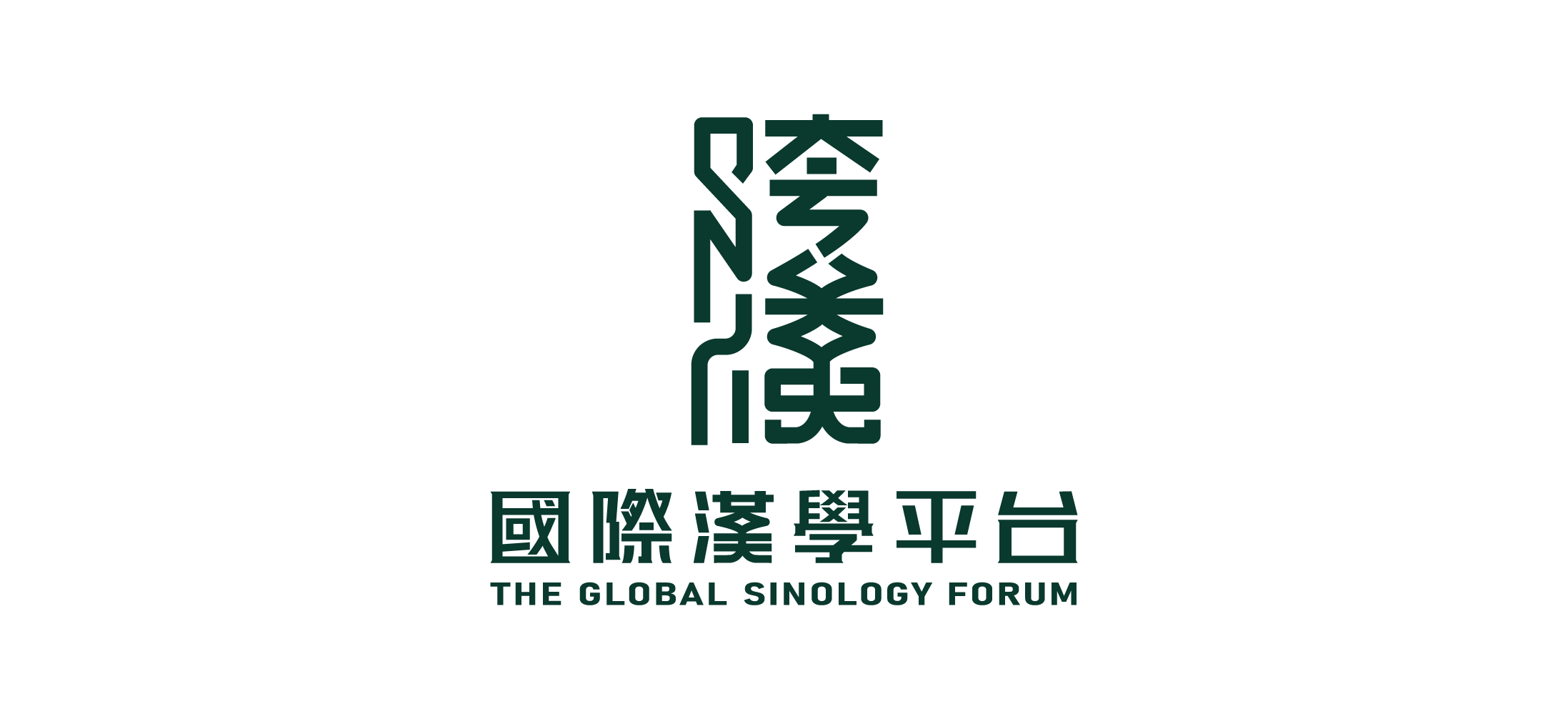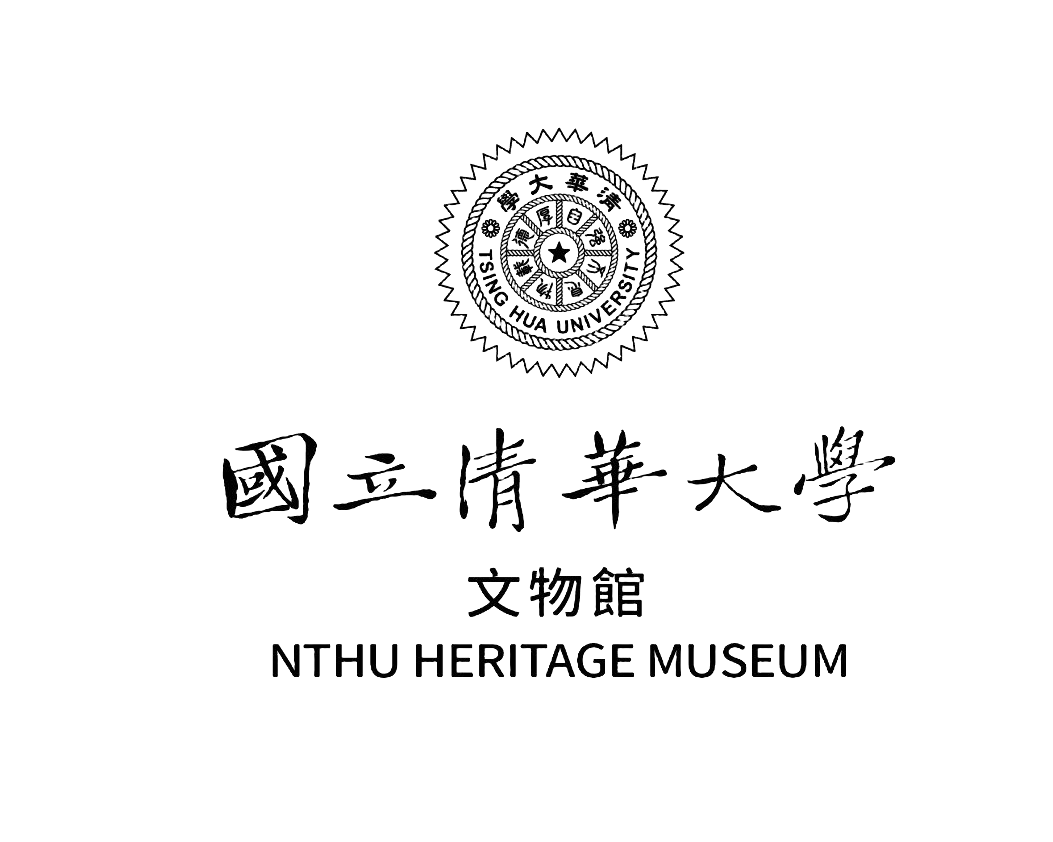歡迎參觀《發揚道統:孫中山時代展》
發揚道統:孫中山時代展
Renovating the Way : Sun Yat-sen and his Era
展覽日期|2022/10/7-2023/1/6
開放時間|週一至週五 9:00-21:00,週六、日及國定假日不開放
11/12週六校慶有開放,歡迎來賓前來參觀。
展覽地點|國立中山大學圖書資訊大樓3樓圖書館藝文展覽室
展覽前導|
國立中山大學攜手國立清華大學,於今年雙十節前夕,共同策畫舉辦《發揚道統:孫中山時代展》,展覽展出由國立清華大學文物館、圖書館移師本校之珍稀文物典藏品四十件,並結合國立國父紀念館授權數位藝術品展示圖像十二件,以及本校圖書館館藏文物、書籍,串起19世紀末20世紀初的東方世界時代記憶,展覽分成三個主題,探討孫文的國際性、中華性、本土性。展品包含國父孫中山先生書寫之傳世大字墨跡〈孫中山壽字中堂〉、首次在臺灣展出的〈武昌起義─鄂軍都督剪髮辮布告〉,以及日治時期台灣議會設置請願運動、蔣渭水報刊資料等,我們希望能為中山師生及南部讀者帶來新的文化歷史藝術饗宴,相信本檔展覽會是今年中山大學校內最值得期待的一場大展。
清大有文物?PODCAST|
國立清華大學文物館在本次展覽中,特別錄製:
空中說展覽:楊儒賓教授導覽《發揚道統:孫中山時代展》導覽作品包括「孫中山壽字中堂」、「辛亥革命武昌督府布告」以及珍貴電報文件等。
清大文物館會客室:專訪書畫修復師林煥盛feat.清大文物館執行團隊,談「孫中山壽字中堂」修復歷程,一窺修復過程中的各個細節。
開幕儀式暨論壇活動
謹訂111年10月7日上午時間10點-12點,於本校圖資大樓3樓藝文展覽室舉辦《發揚道統:孫中山時代展 Renovating the Way : Sun Yat-sen and his Era》開幕儀式,現場將有文物收藏名家國立清華大學楊儒賓教授與本校中國文學系莫加南(Mark McConaghy)教授,為大家帶來精彩的文物與展覽導覽。
下午時間2點-5點,於本校文學院文7006舉辦「中華民國作為共業?—民國與台灣國際論壇 The ROC as a Common Project? An International Discussion on the Republic and Taiwan」論壇,邀請海內外國際學者共同與談,歡迎中山師生前往聆聽。
主持人:
莫加南(國立中山大學中國文學系助理教授)
與談人:
萬毓澤(國立中山大學社會科學院副院長)
汪宏倫(中央研究院社會學研究所研究員)
王智明(中央研究院歐美研究所研究員)
Macabe Keliher(美國南方衛理會大學歷史系教授)

展覽介紹|
中國文學系莫加南(Mark McConaghy)助理教授 撰文
孫中山 (1866-1925) 是誰?何謂他的革命?而其理念在當今的台灣還有意義嗎?本展覽以晚清民初的書法、照片、報紙、藝術品等不同媒介的珍稀文物,引領觀覽者思考孫文在想像、孕育中華民國時所展現的價值體系和文化理念,探索中華民國的現代轉型如何誕生。
出生於大清國境之南廣州民間家庭的孫文,自年少時期即耳濡目染異國語言文化,曾旅居往來檀香山與英屬香港近四十年,學習西醫、熟稔英文,甚至皈依基督教,並深信帝制王朝已淪為腐策沉痾,無法回應現代世界而應予汰換,從而主張「民國」作為中華世界政治制度,取代原有的政治體制。
儘管孫文領受西方思潮洗禮,然其早年亦受過紮實的傳統儒家教育,與之同代的知識份子有康有為(1858-1927)、梁啟超(1873-1929)、譚嗣同(1865-1898)等。這群新式儒紳認為:中華世界的「現代性」並不等於徹底揚棄原有傳統社會的精神,而是一漸進式的革新。其中,與五四時期的反傳統主義者或稍晚的馬克思主義革命者相比,孫文的政治主張提供更溫和、更具延續性的現代性轉型路線。據此,本展覽以「發揚道統 」為題,即是採用孫文自身說法來揭櫫革命目的:如何在現代歷史的進步脈絡下彰顯中華世界的人道傳統,於文化賡續與創新之間取得平衡。
此外,孫文現代思潮的影響也擴及日治時期的台灣。反對殖民主義的台灣知識份子群體,如蔣渭水(1890-1931)、林獻堂(1881-1956)與連橫(1878-1936)等對如何思考國家、現代性與啟蒙等一系列關鍵概念,均接受現代中華民族主義思想。據此而言,孫文的革命思潮內化於台灣歷史,是台灣日治時期知識分子思考自我、群體與未來的重要思想資源。
本展覽以孫文的國際性、中華性與本土性為主軸而開展,希冀透過這三個面向,引領觀者思考孫文暨其革命歷史。尤其,以孫中山為首打造的民國共和體制,在兩岸分治後仍存續於東南一隅的台灣,這讓人不禁思索:道統的重構是否在島嶼已隱然成型?平心思問,在邁向當代,著眼跨文化、國際化的過程中,我們丟失或存續何種中華傳統裡的要素?如果維繫固有的文化基礎仍是未竟之業,究竟如何實踐?
本展覽邀請各位與我們一起思考這些問題。
Who was Sun Yat-sen (1866-1925), what was his revolution, and are the ideals of his era still relevant to 2022 Taiwan? This exhibit utilizes calligraphic works, photographs, newspaper clippings, material objects, and art works from the late Qing and early Republican eras to to engage viewers in a multi-media exploration of the process of modern transformation that gave birth to the Republic of China. In particular, the exhibit focuses on the ideals that were mobilized by Sun in imagining what this new Republic could be for the Chinese world.
Sun was a polyglot figure, born to a Cantonese family of modest means at the southern edges of the old Qing imperium. From an early age he was in contact with foreign languages and cultures. He would spend an extensive period of the first four decades of his life in Hawaii and British Hong Kong, where he studied Western medicine, became proficient in English, converted to Christianity, and agitated for Republicanism in China, inspired by a deep desire to overthrow what he understood to be a lethargic and unresponsive imperial system.
Yet despite these many foreign influences, Sun also had an extensive training early in his life in the Confucian classics, being of the same generation of thinkers such as Kang Youwei (1858-1927), Liang Qichao (1873-1929), and Tan Sitong (1865-1898). These were new style literati for whom modernity did not mean a complete abandonment of the traditional Chinese life world, but its gradual renovation. Sun’s political path thus came to represent a more moderate, but also perhaps more sustainable, vision of Chinese modernity than those offered later by May Fourth iconoclasts and revolutionary Marxists. This exhibit is thus entitled “Renovating the Way,” which was an expression used by Sun himself to describe the goals of his revolution: to enable the broad humanistic ethos of the Chinese world to express itself in modern and progressive terms, finding a balance between preservation and innovation in the 20th century.
Sun’s vision of modernity also had tremendous influence in early 20th century Taiwan, then enduring Japanese colonial occupation. Members of the anti-Japanese colonial opposition such as Chiang Wei-shui, Lin Hsien-tang, and Lian Heng turned to modern Chinese nationalist thought for inspiration regarding how to think nation, modernity, and enlightenment. Sun’s revolution is therefore internal to the history of Taiwan itself, being a critical resource through which Taiwanese intellectuals of the colonial period thought self, collectivity, and futurity.
The exhibit is thus organized around three major themes: the international, Sino, and local dimensions of Sun’s revolution. It is hoped that viewers will use the exhibition of these rare historical materials as a jumping off point for their own reflections on the meaning of Sun’s revolution and the ideals of the Republic it fostered, a state which continues to thrive on the island of Taiwan today. Has the renovation of the Way been completed? What elements of the humanistic tradition of the Sino-world have been lost in our rush towards modernity? What work is left to be done as we seek to balance our Sino-cultural roots with transcultural internationalization?
更多關於展覽精彩的介紹,歡迎參觀
主辦單位






協辦單位
![]()
![]()
展覽諮詢請洽|策略企劃組 邱小姐, 07-5252000分機2413, E-mail:chiu9137@mail.nsysu.edu.tw
Office of Library and Information Services, Chiu, Yu-Ya, Tel: 07-5252000 ext.2413, E-mail:chiu9137@mail.nsysu.edu.tw
上架日期 2022/9/28
更新日期 2022/10/8, 2022/10/14


